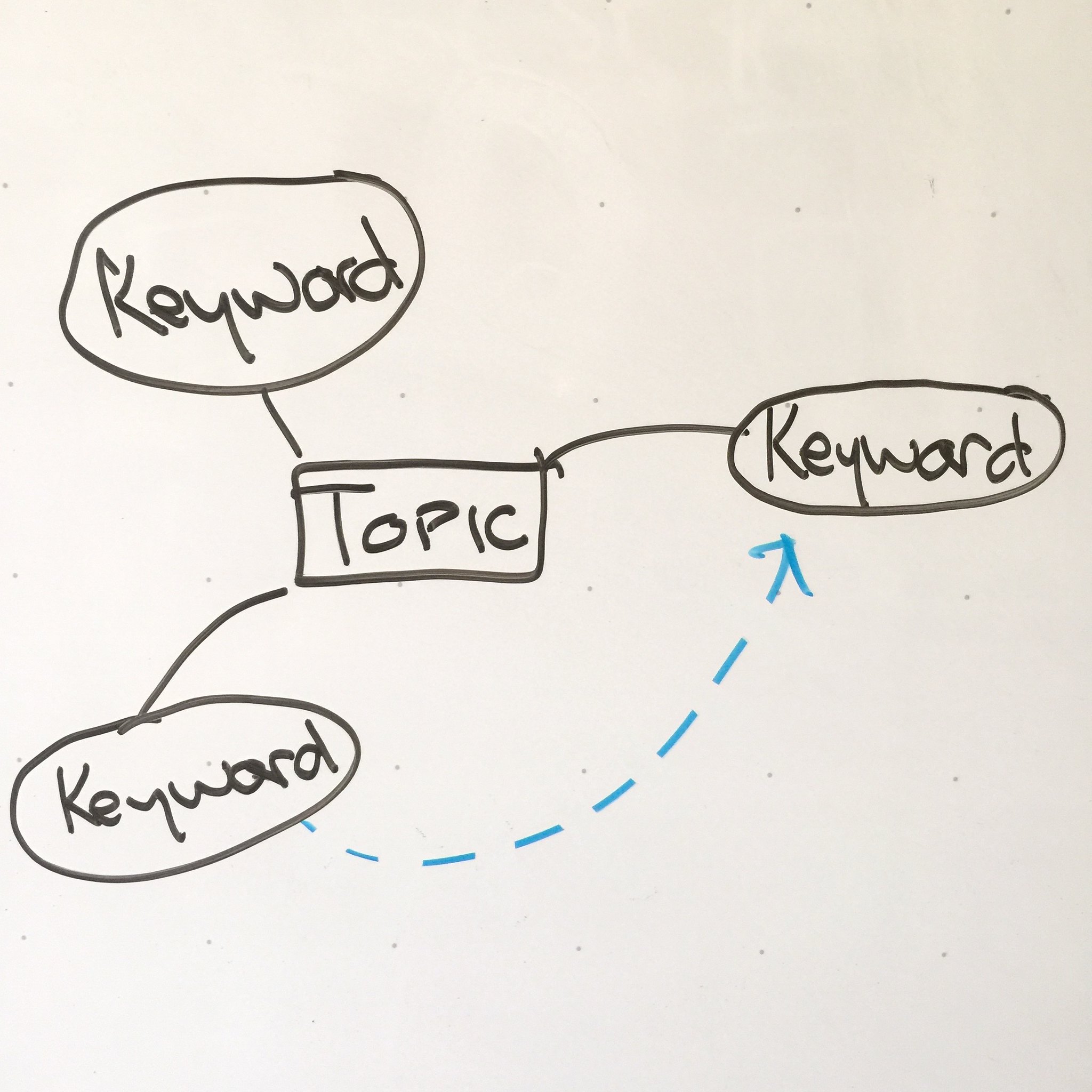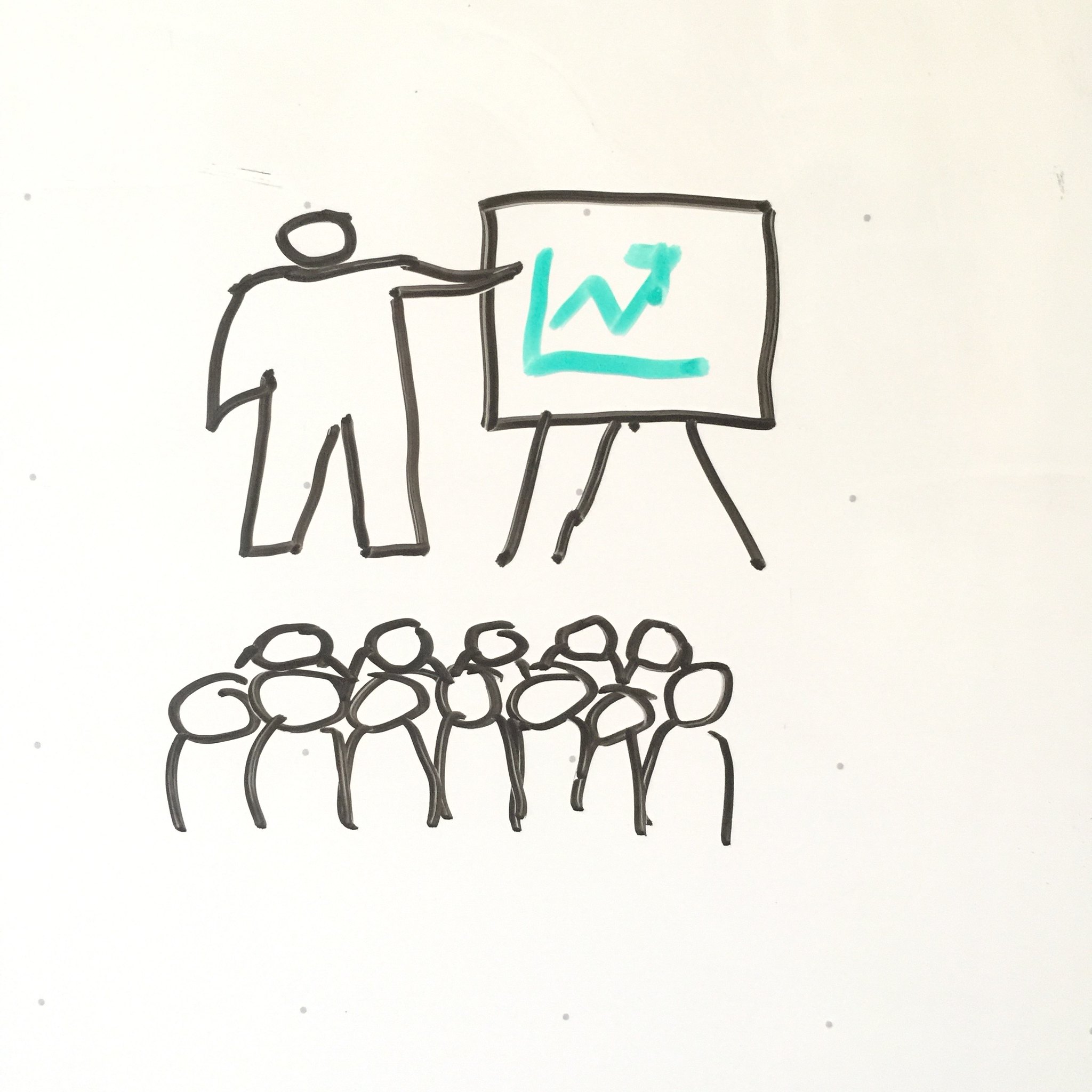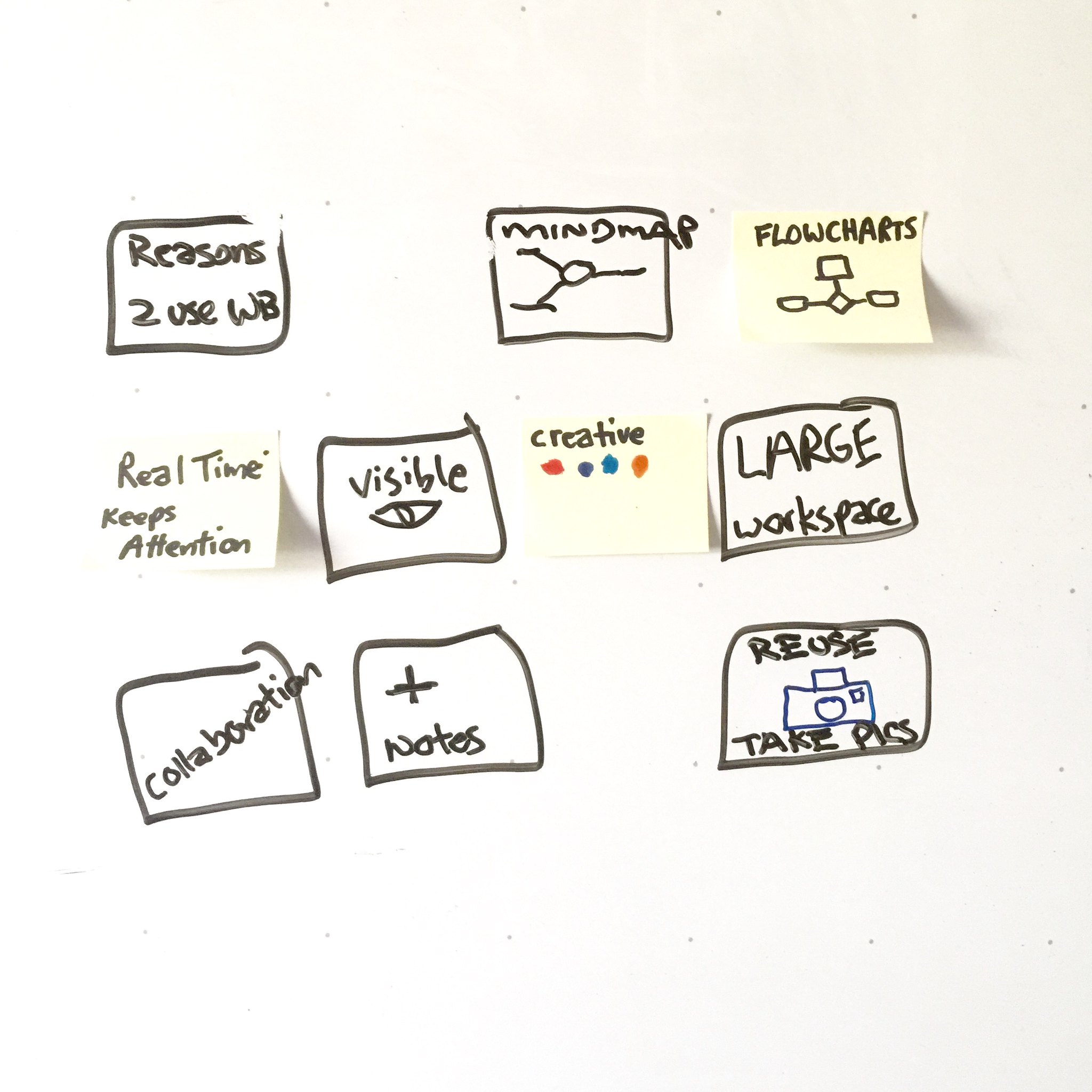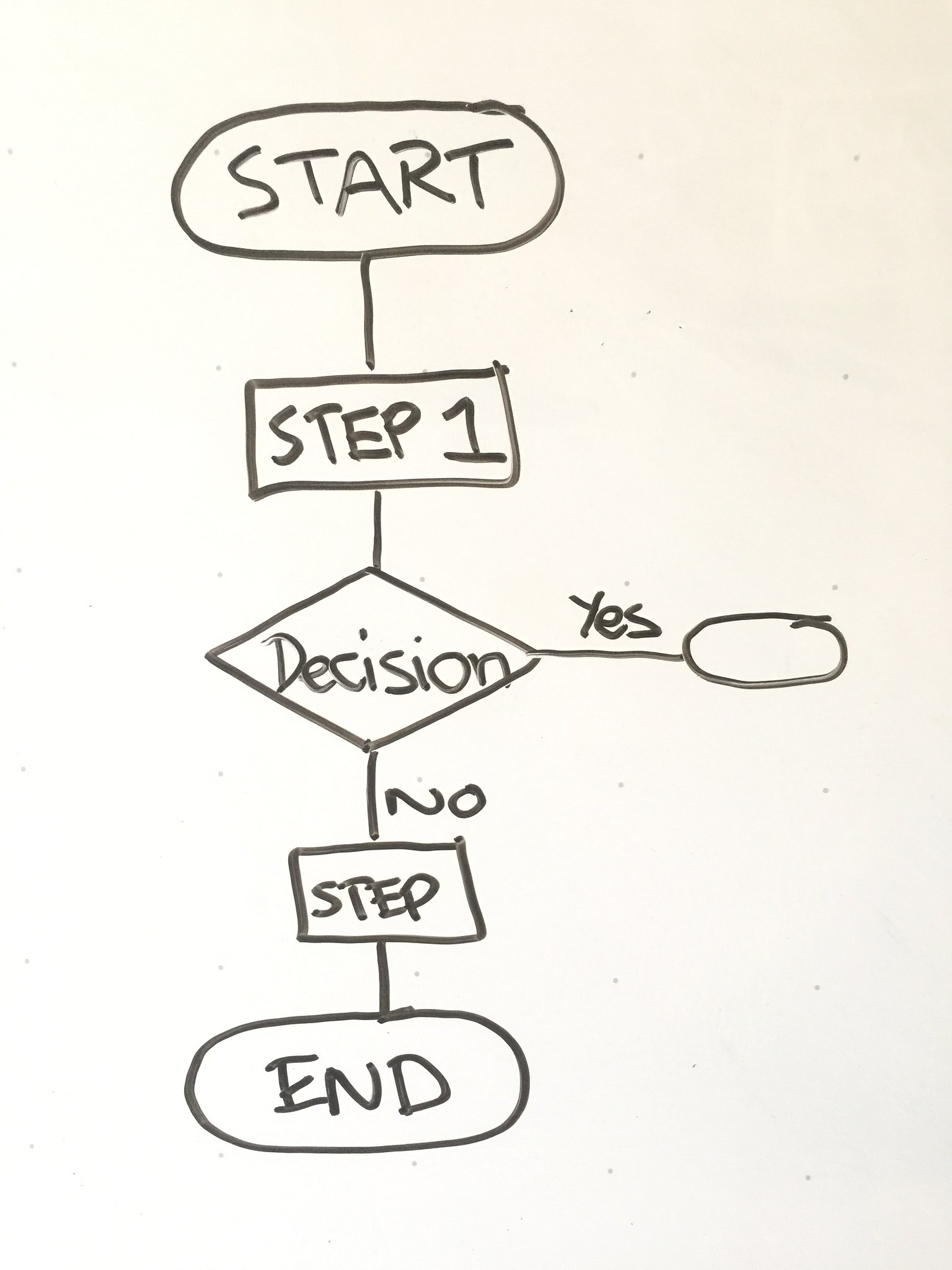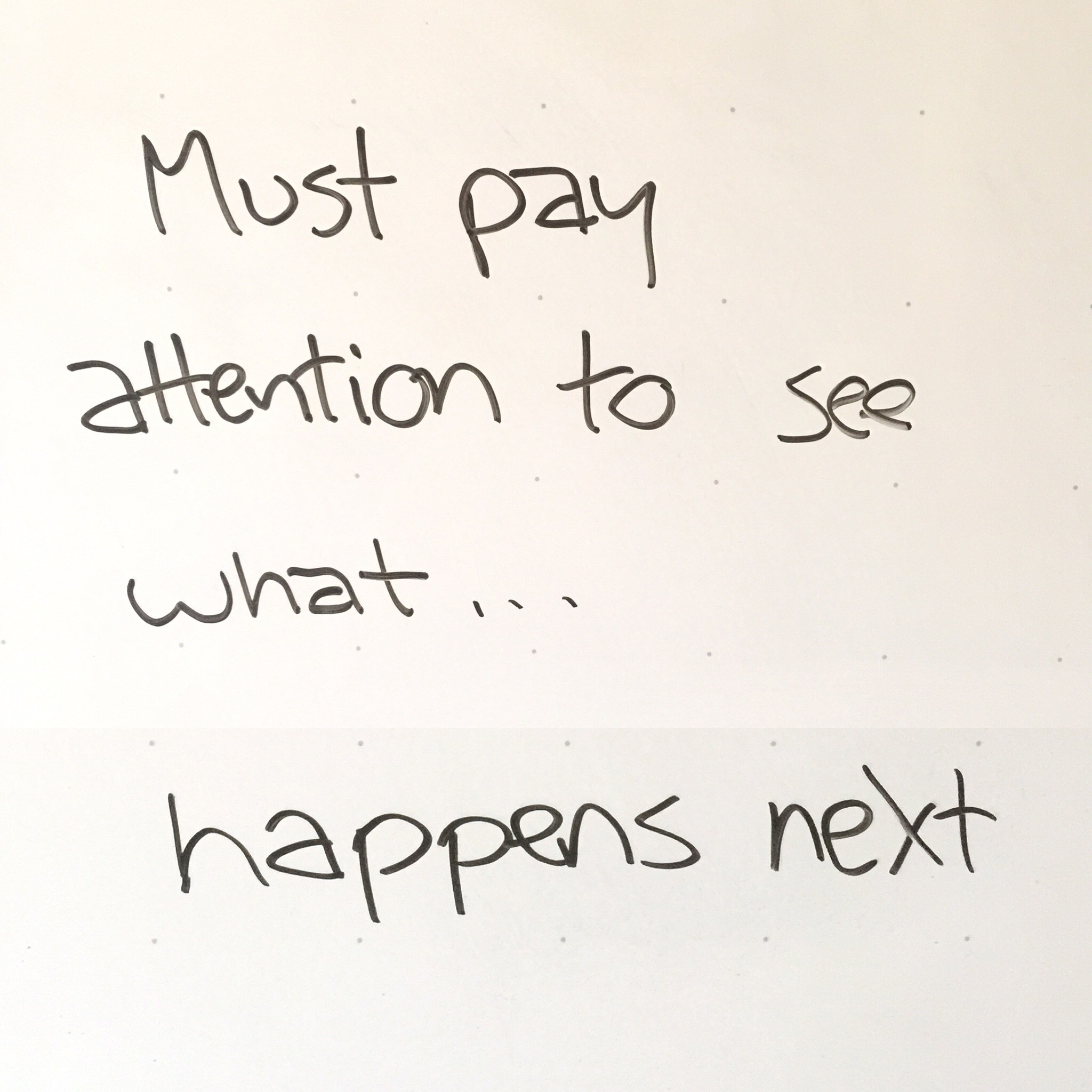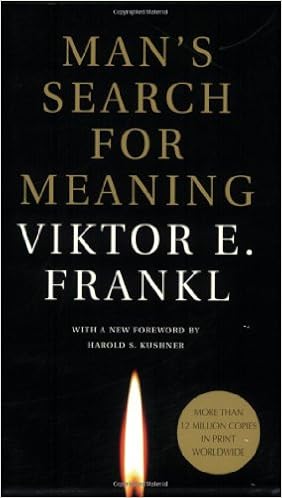Recently, I decided that I needed to expand my whiteboard space, so I purchased a second board, also 24x36, resulting in a usable space of 36x48 inches. Just like one monitor seems okay until you experience the productivity advantage of working with dual monitors, you can't have too much whiteboard space.
1 Erase mistakes
With a good eraser whiteboards are very forgiving. As soon as you can see a word or idea visually, all it takes is a swipe of the eraser to start with a fresh canvas. Just be certain that the pens are dry erase markers and not permanent or flipchart markers. I have seen several people write on a whiteboard only to discover that mistakes can't be erased when using the wrong pens.
2 Connect ideas
Mind maps are a great brainstorming tool, whether in groups or working by yourself. Another similar tool is the Ishikawa fishbone diagram, used to help identify causes of problems. Whiteboards are an effective medium to quickly write out key points and then draw connecting lines between various topics.
3 Show your work
Whiteboards are usually mounted on walls or on an easel stand. They are designed to provide maximum visibility for a group. Remember to write in a large font if you are working with a large group. Writing neatly is also helpful.
4 Live large
The larger the whiteboard space the better. I once worked in a place with a conference where all of the walls consisted of whiteboards. Every time we came into the conference room we could see how ideas were developing.
5 Play well with others
Collaborative brainstorming typically results in more and better ideas than thinking alone. Whiteboards provide an excellent way to quickly write out ideas and draw designs. This can be accomplished concurrently, when working together, or asynchronously, as various individuals contribute to different ideas on the whiteboard over time.
6 Storyboard like Disney
Walt Disney pioneered the concept of presenting a series of drawings to tell a story. His technique, storyboarding, is now used everywhere. Whiteboards can be used to plan presentations and documents. If you print PowerPoint or KeyNote slides at 9 to a page, they are the same size as small sticky notes. Using the whiteboard, you can tape printed slides, add sticky notes, and draw other ideas for slides.
7 Reuse, recycle, renew
Just like you can erase mistakes, you can erase everything and use the space again. Before you erase, take a photo so that you can utilize the ideas from the whiteboard later.
8 Explore your creative side
With a variety of colors and pen sizes, there is no end to the creativity when using a whiteboard.
Additionally, because you can place text and drawings anywhere without software limitations, it is easier to be creative.
9 Find your path
When developing a new process or reviewing an existing one, the whiteboard makes it easy to walk through the various steps of a process. As you draw out a process, it is easy to make changes or insert additional steps. Once a process is captured on the whiteboard, you can then review the process to look for unnecessary steps or opportunities for improvement.
10 Keep your audience focused
When you are creating in real-time, the audience must focus on your presentation. The audience can’t read ahead or lag behind. Using a whiteboard will help you and your audience stay at the same pace. Using a whiteboard ensures that you keep visuals simple without unnecessary graphics or too much text.



